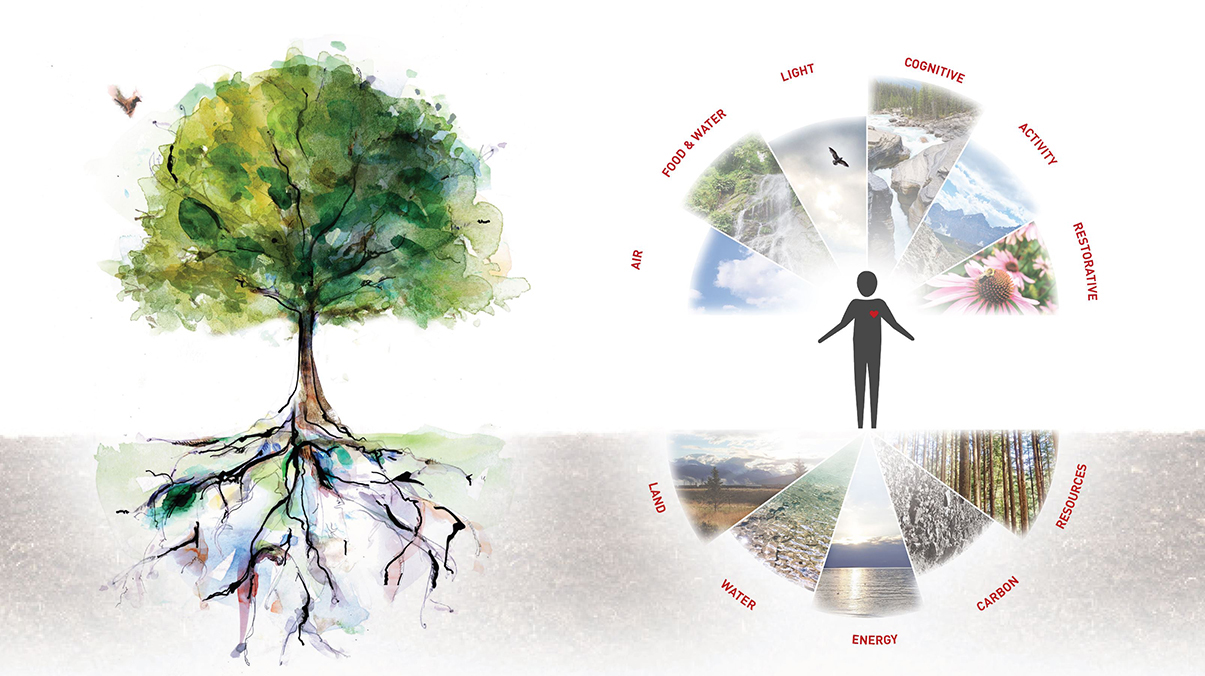
END OF YEAR POST
2020 – what a year it has been! Globally, of course, it has been unforgettable; personally and professionally, it has been notable as well.
Once we settled into remote work after the pandemic hit in March, we embarked on several initiatives.
We re-imagined how to share our “2020 Vision” and set forth documenting our unique approach to architecture. For us, sustainability is all about health. To preserve human life on this planet, we must re-define sustainability to recognize the essential, interdependent link between personal health and planetary health. This definition must center around the concept that human health is not possible without a healthy planet. When we speak of saving the planet, we must realize that we are really speaking about saving ourselves. Left on its own, nature will always find its equilibrium. Truly, the real issue of sustainability is to find a way that humans can thrive in partnership with the planet, such that one can sustain the other in a circular, balanced manner grounded in principles of stewardship and respect. We imagine multi-sensory buildings that restore health; buildings that inspire; that empower their local communities and ecosystems, give back to society and contribute to a circular economy. We were inspired by nature itself and created the diagrams above to share our philosophy. We identified key, interdependent factors of human and planetary health. Just as a tree is rooted in the earth, we envision buildings firmly grounded in their ecosystems, respecting and contributing positively to all definitions of health. We recognize that each aspect of a building’s design is supported and dependent on another, just as in nature, where ecosystems are multi-faceted, interconnected and dynamic.
This wasn’t our only initiative for the year. As many of you know, we love to research as we feel it makes us better architects. We were fortunate this year, that we were able to formalize a number of documents and still have a few more in the works that will be unveiled in 2021.
Together with our colleagues at L’Institute Idée and Kirsh Design, we embarked on a few specialized documents on workplace and hotel design. We began by using L’Institute Idée’s proprietary methodology called the Structural Mapping Process® (SMP) to uncover the emotional drivers that are associated with desirable workplaces and hotel environments. What emerged from the study and our subsequent strategy sessions was a series of fresh ideas about design and implementation that will challenge conventional thinking in both these industries. More about the workplace document can be found here. For the hotel document, stay tuned as it will be unveiled in January via social media.
Throughout the year, our team worked on a few design competitions. We will be sharing images and ideas from both of these submissions in 2021.
We rounded out the year with a few publications to note. Our Equilibrium House was featured in the Winter 2021 Harvey Kalles’ The Collection Magazine with an article entitled “True Equilibrium: Health and Wellness in Architecture”.
And just in time for the holidays, we received our copy of “Innovations in Hospice Architecture” which features our Darling Home for Kids project. We were thrilled to be included in this book alongside some amazing projects and architects.
As unusual as 2020 has been, we found some silver linings that we will carry forward with us to 2021. We look forward to collaborating with all of you in 2021 and wish you a year of health and happiness.
Best, Denise